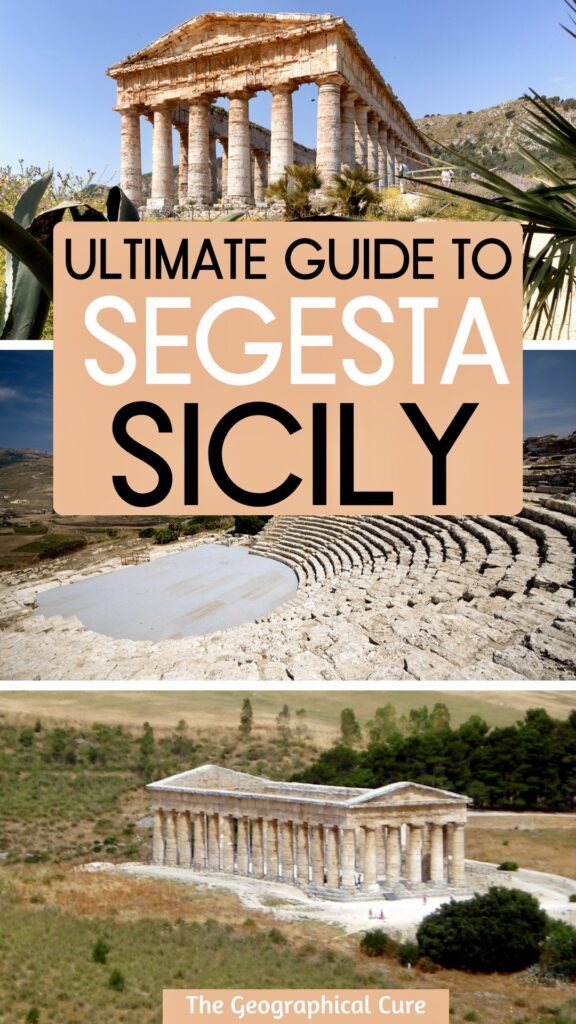Planning a visit to Segesta Archaeological Park? This Segesta guide tells you everything to know about one of Sicily’s most picturesque rural ruins, and gives you must know tips for visiting.
Long before the Greeks arrived, Segesta was the principal city of the ancient and mysterious Elymians. They lived in Sicily during the Bronze Age and Classical antiquity.
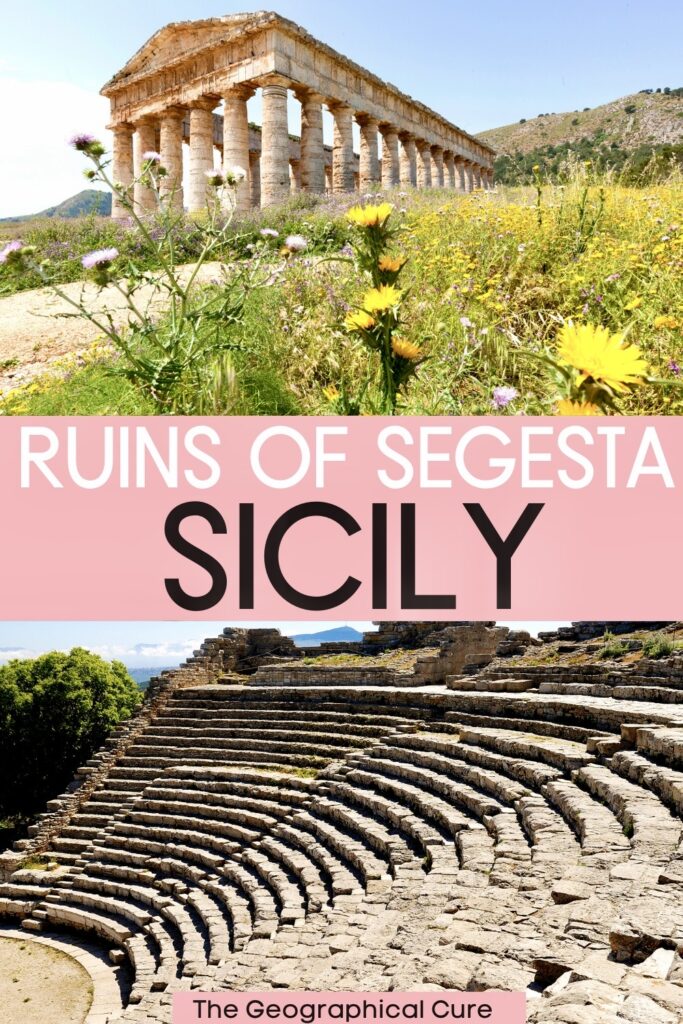
In Segesta, you’ll find a well-preserved honey colored temple and theater strategically set amid rolling hills, olive trees, and wildflowers.
It’s a majestic site on an isolated hill. The Elymians chose the spot for defense, worship, and the pure aesthetic delight of the bucolic setting.
The ruins of Segesta are somewhat of an anomaly in the Mediterranean. They’re a testament to all things Greek, but built by the non-Greek ancient Elymians.
History of Segesta Sicily
Legend holds that Segesta was founded in the 9th century B.C. by people who escaped the Trojan War in Asia Minor. We don’t know much about the Elymians because their language was never deciphered.
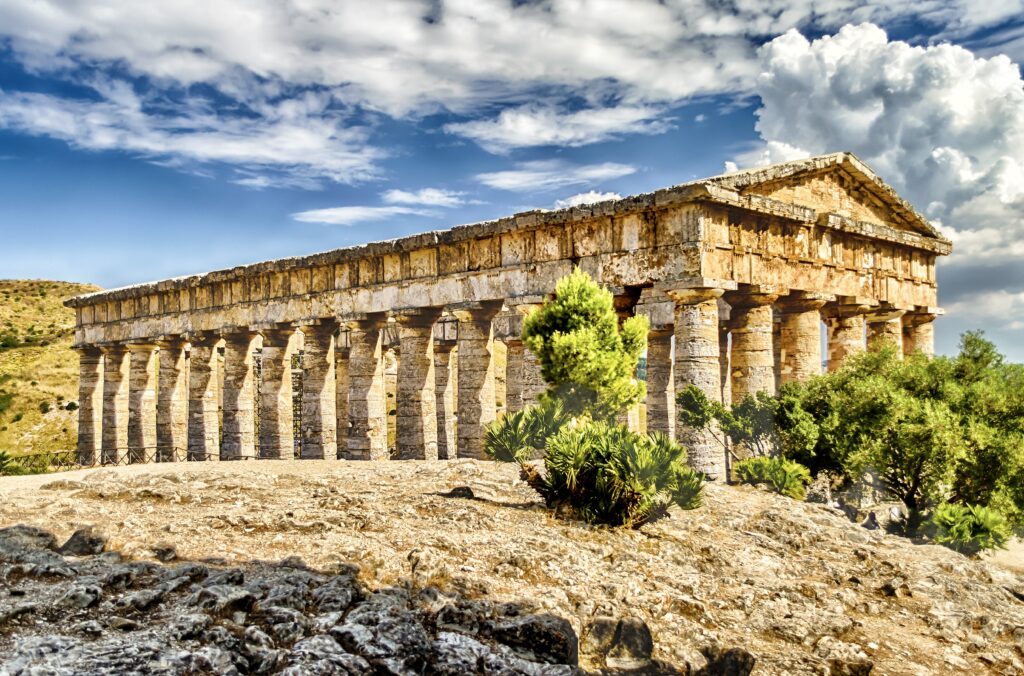
But scholars do know that their city was called Egesta and it was a prosperous one. From the 7th century B.C., it had a market attracting traders from all over Europe.
The Greeks never settled on Sicily’s west coast. But the Elymians absorbed some of their culture because they were surrounded by Greek colonies.
Unlike other indigenous people in Sicily, the Elymians were independent. They opposed Greek domination, first in alliance with the Carthaginians and later in alliance with Rome.
Segesta was constantly in conflict with its neighbor, Selinunte, a Greek city on the southwest coast. In 454 B.C., Segesta asked Athens for aid in their ongoing battles with the city.
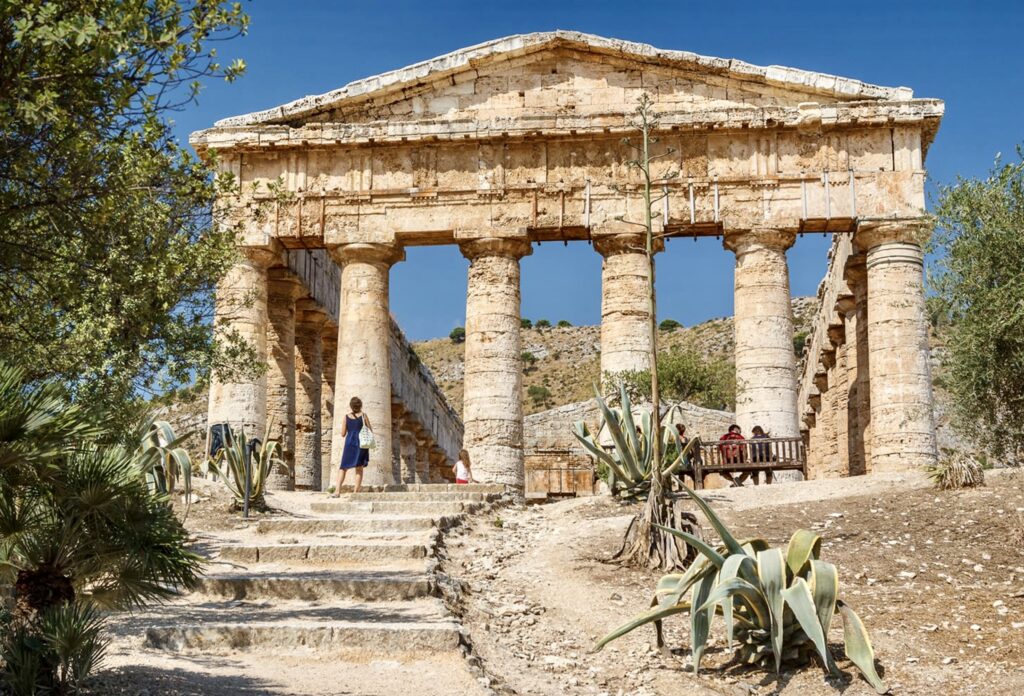
Athens agreed, dispatching troops and a fleet. But they never made it to the scene of the battle. On the way, they were being defeated by Syracuse, the most powerful city in Sicily.
Without the help of Athens, Segesta appealed to Carthage for aid. The Carthaginians sacked Selinunte, but decided to keep it for themselves. Segesta thus became a dependent vassal of Carthage.
In 307 B.C., Segesta was then sacked by the tyrant of Syracuse, Agathocles, who populated the city with Greeks. Later Carthage and Syracuse came to terms, with Segesta remaining part of the Carthaginian hegemony.
In 263 B.C., the Romans took over and Segesta prospered during that era. In the 9th century, the invading Saracens finally destroyed the city.
All that’s left of the ancient city are the ruins of a dramatic theater perched atop a hill and a 5th century B.C. temple in the valley below. There are also some scant remains of a church, agora, and castle.
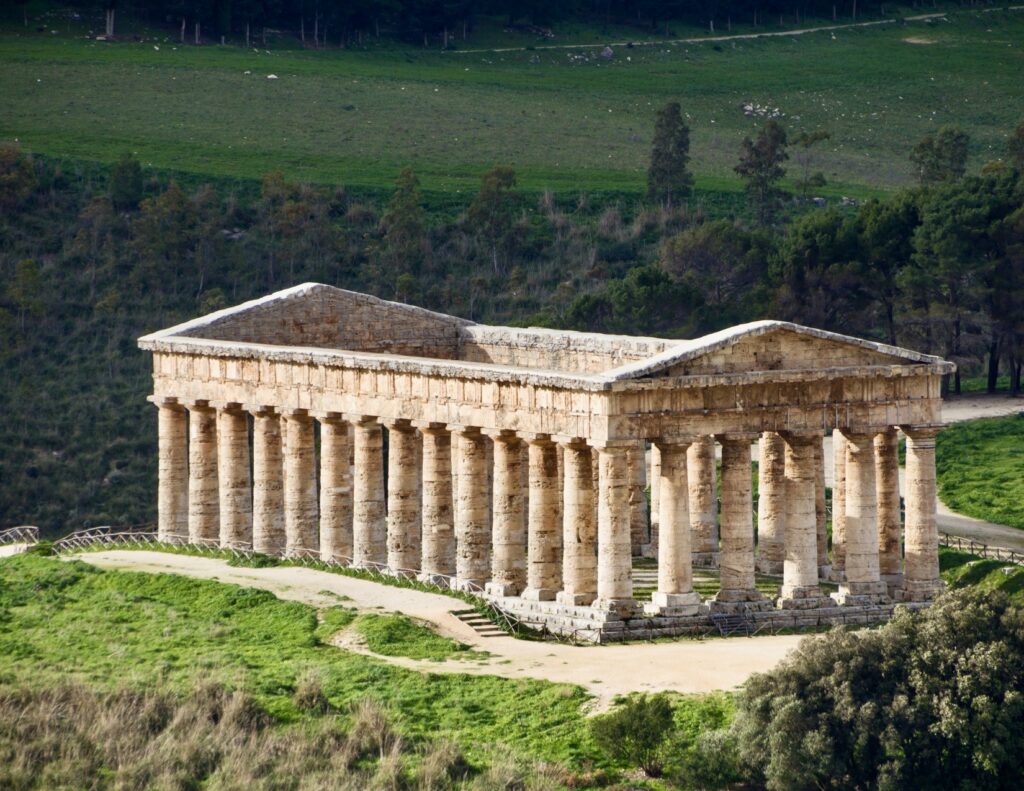
Guide To The Ruins Of Segesta Sicily
Here are the things to see at Segesta Archaeological Park.
Temple
Segesta’s temple is the centerpiece of the park. It’s one of the world’s best preserved ancient Doric temples. The Doric order was one of three orders of Greek and Roman architecture, along with Ionic and Corinthian.
The temple is an unfinished, but nonetheless grand, structure dating from the 430 B.C. It represented the ancient city of Segesta at the height of its power. It seems to have survived the ravages of time almost perfectly intact.
The beautifully preserved temple is Doric in style. It’s 69 feet by 183 feet, a rather petite temple for the time.
The entire peristyle is preserved, with 14 columns on the sides and 6 on the front and back. There is a perfectly intact frieze, entablature, and pediment. on windy days, it’s said that the 36 columns create musical sounds akin to an organ.
The purpose of the temple was religious. A 2nd century B.C. inscription, found nearby, suggests that the temple may have been dedicated to the cult of Aphrodite.
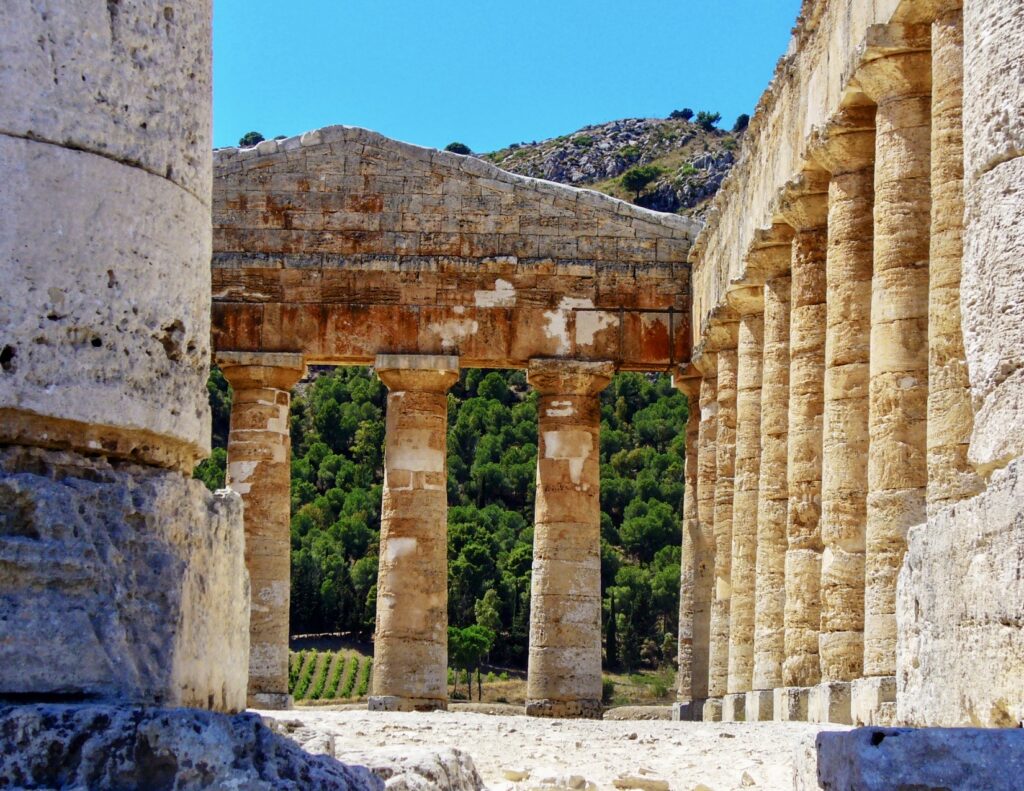
The showy temple was never finished. You can tell this from the lack of fluting on the columns and the lack of any trace of an inner cella or roof.
Historians hypothesize that the Elymians built the temple to impress Athens and gain the city as an ally in its ongoing battles with Selinunte. Perhaps it was a “stage set” to convince Athens of its prosperity, rather than a formal temple.
When Athens was defeated by Syracuse, the Elymians appeared to abandon the temple. Or, perhaps they just didn’t have time to finish it, as they were busy warring with Selinunte.
Unfortunately, you can no longer step into the temple itself. You will have to content yourself with walking around it. Still, it’s impressive.
Right now, there is an art installation with neon lights around the perimeter of the frieze by Mario Merz called the Fibonacci Sequence. It’s a nod to Italian mathematician Leonardo Fibonacci, who discovered a progression in which each number is the sum of the previous one. The numbered lights, like the sequence, trace a line of infinity.
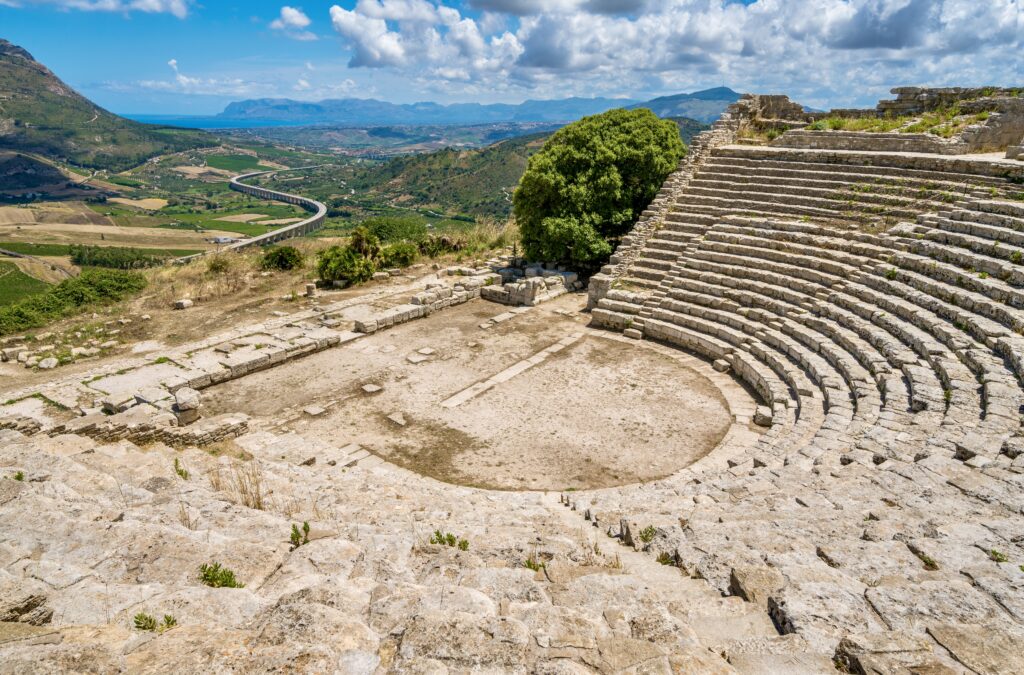
Theater
From the temple, it’s about a 30 minute walk up to the ruins of the Theater of Segesta. You can also take the shuttle bus, which runs every half hour. The theater has a breathtaking perch, overlooking the Gulf of Castelamare.
The chronology of the theater is much debated. But scholars appear to think it was originally built sometime in the 2rd to 4th century B.C. What you see today is relatively more “modern” than the temple, dating from the 2nd century B.C.
The theater is small by Greek standards, but once seated 4,000. It was excavated in the 19th century and and parts of it have been restored.
The theater had the typical shape of Greek theaters. It has a semi-circular tiered cavea, or seating area.
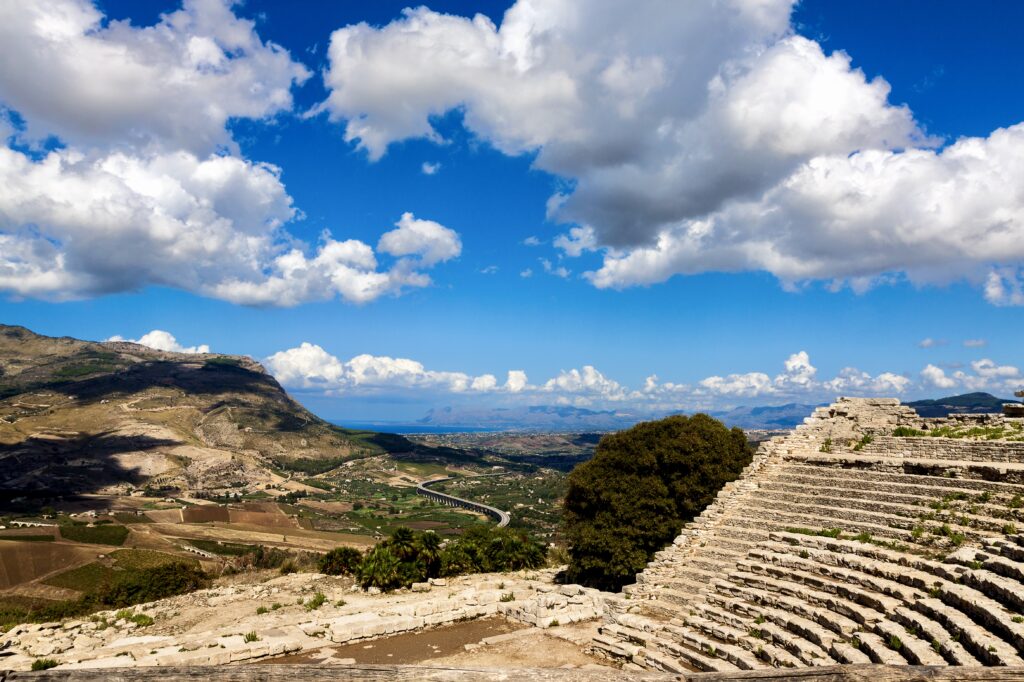
But, unlike most Greek theaters, it wasn’t built into a mountain. Rather, it was built freestanding and then buttressed with an artificial fill.
Worn stones served as high backed spectator seats. They are divided into 7 sections with 6 staircases, which you can tramp right up to take in the views.
The theater has been altered somewhat. When the Romans arrived, they enlarged the stage, possibly to fit gladiators. Then, the theater was plundered in the Middle Ages.
The theater had, and still has, good acoustics from the sea breezes. You can test it out yourself by standing on center stage and belting out an aria. In the summer, the theater hosts theater events and Greek dramas.
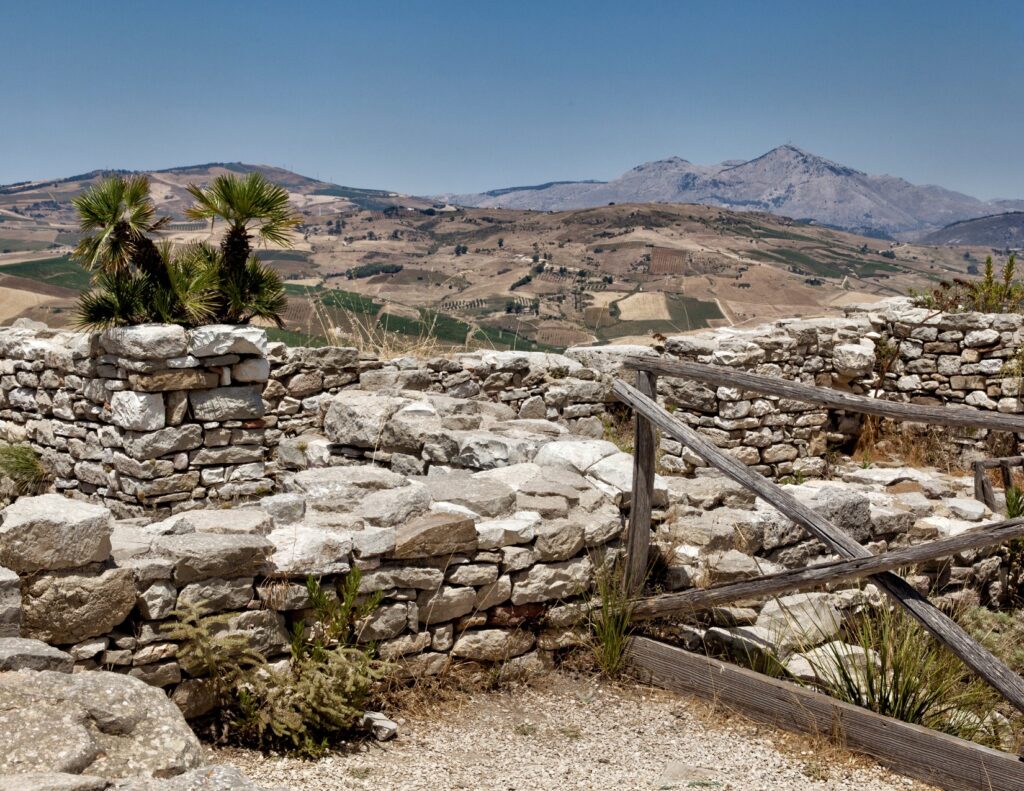
Other Ruins Of Segesta
Near the theater you can other ruins from the city of Segesta — an agora, mosque, church, and castle on Mt. Barbaro near the theater. They are a testament to the fact that the city of Segesta was alive and well-populated until the Imperial age. But the ruins themselves are pretty scant.
The agora once consisted of three terraces. The middle level had a finely paved terrace and imposing porticos. The upper terrace had a council house.
In the 2nd century B.C., the Romans transformed the lower terrace of the agora into a forum.
The complex was completely destroyed by an earthquake in the 3rd century A.D. In the Norman age, a castle and church were built on the site. The church may have been converted from an ancient temple.
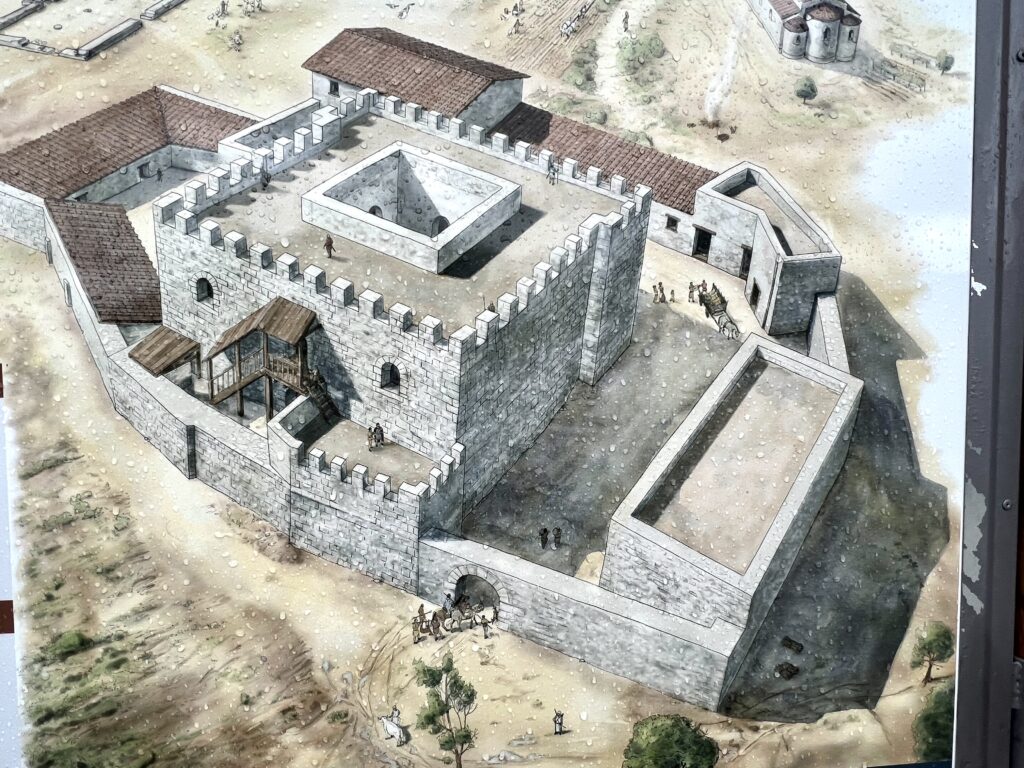
Tips For Visiting Segesta
Here’s some must know tips for visiting the ruins of Segesta Sicily.
How To Get To Segesta
If you are road tripping in Sicily, you can easily drive to Segesta. Signs for Segesta are clearly marked on the A29 autostrada.
Segesta is 25-30 minutes from Trapani and 1:15 from Palermo. Segesta makes a good stopover if you’re traveling from Palermo to Trapani. If you want to avoid crowds, plan to arrive early on the early side.
Park in the designated lot at the bottom of the hill. Pay at the kiosk and keep your ticket. The parking ticket gives you access to the shuttle bus to the main entrance and to the one between the temple and theater.
The shuttle bus will deposit you at the main entrance where you purchase tickets.
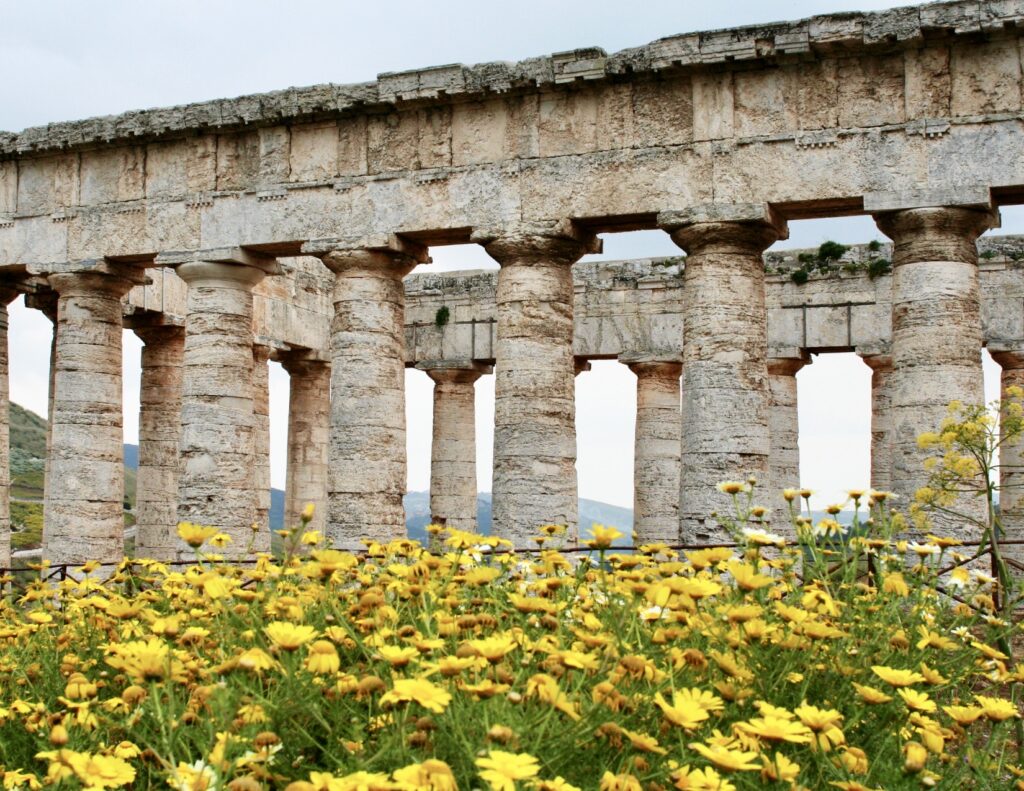
The ruins of Segesta temple are a steep 5-10 minute walk from the parking lot. But the views are sublime. You can also take a shuttle bus.
I suggest shuttling up and then hiking back down the hill no the footpath. On the way, you’ll have stunning views of the temple and the countryside.
If you don’t have a car, the easiest way to visit is via a guided tour from either Trapani or Palermo. There’s very limited public transportation. You can book:
- a 6 hour tour from Trapani that includes both Segesta and the archaeological site of Selinunte
- an 8 hour tour from Palermo that includes Segesta, Erice, and the Trapani salt pans
- an 8 hour tour from Palermo that includes Segesta and a wine and olive oil tasting
- a 6-7 hour tour from Palermo that includes Monreale and Segesta
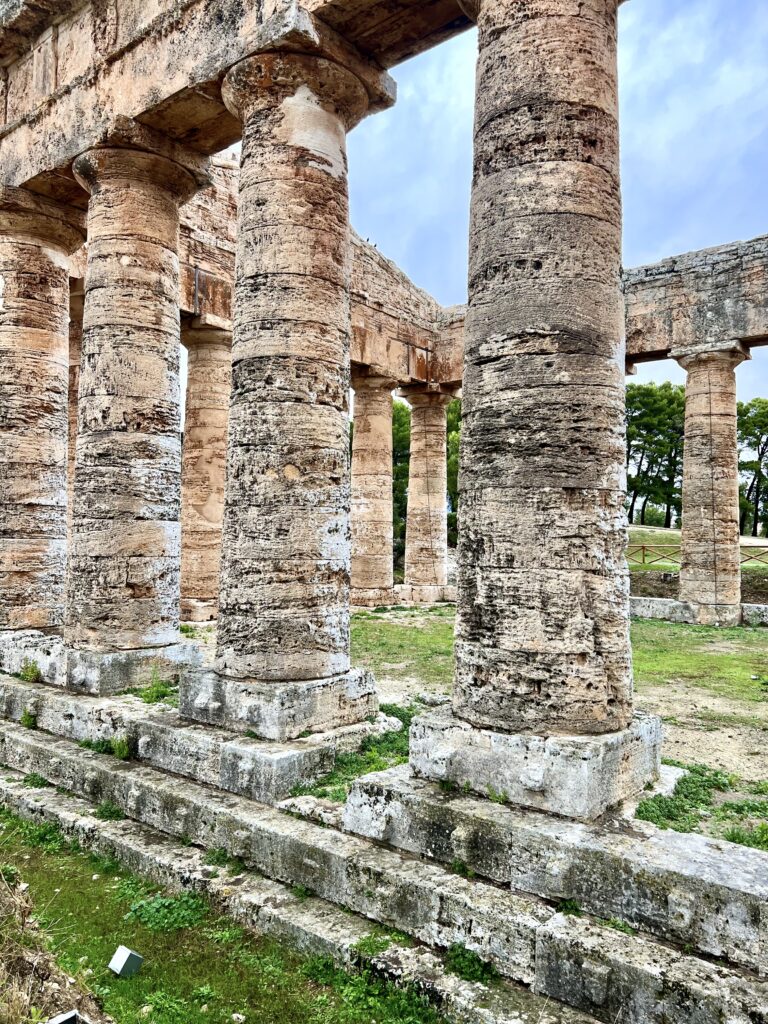
Tickets
If you want to skip the line, you can pre-book a ticket in advance. If you want to buy one onsite, the price is € 6. A reduced price ticket is € 3 if you’re between 18 and 25 years old and under 18 is free.
Opening Hours
Segesta Archaeological Park is open year round. May is when you’ll see the stunning display of wildflowers. Here are the opening hours:
- March 27 to Sept 30: 9:00 am to 7:00 pm
- October 1-31: 9:00 am to 6:00 pm
- Nov 1 to Feb 28: 9:00 am to 5:00 pm
- March 1-26: 9:00 am to 6:00 pm
The last admission is one hour before closing. It’s a nice place to take in the sunset if you arrive late in the day.
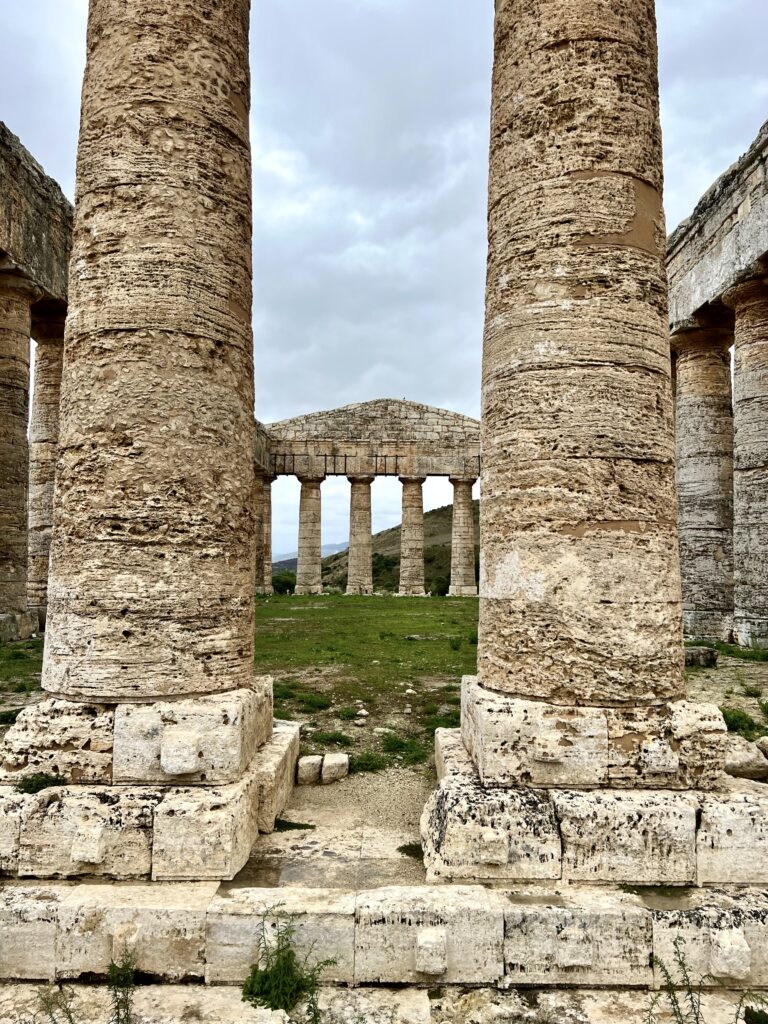
Other Details
Onsite, you’ll find rest rooms, a cafe, and shops at the ticketing entrance.
Is Segesta Worth Visiting?
100% yes. The ruins of Segesta are ancient. So ancient they crushingly pre-date your typical Roman ruin.
On a visit, you can gape at some of the oldest objects in the world with a time vibe practically quivering in the air. Plus, Segesta is easy to get to from almost any town or city in western or northwestern Sicily if you have a car.
I would budget 2 hours to visit. Perhaps a bit less time if you use the shuttle buses.
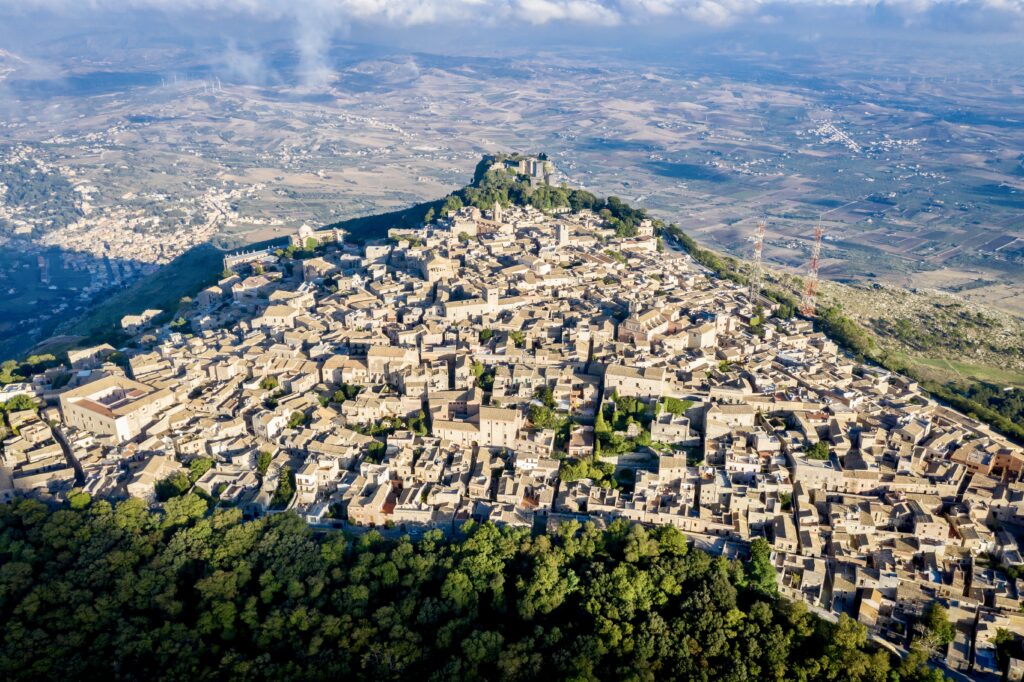
Places To Visit Near Segesta
There are several other places to visit in the Segesta Sicily area, which you can combine on your visit.
Erice
I think Segesta is best combined with a visit to the hilltop aerie of Erice, Aphrodite’s former home. Also founded by the Elymians, the town is one of Sicily’s loveliest. You can park your car outside the city walls or take the aerial tram from Trapani.
Erice seems entirely made of stone, a place where time has long ago stopped. The town is an irresistible maze of cobbled lanes and hydrangea bushes that’s worth a few hours. There are plenty of cobbled lanes to explore, a temple with a view, and a cathedral bell tower to climb.
You can also visit the pastry shop of the Queen of Sicilian pastry, Maria Grammatico to sample her “nuns’ boobies” and “beautiful uglies.”
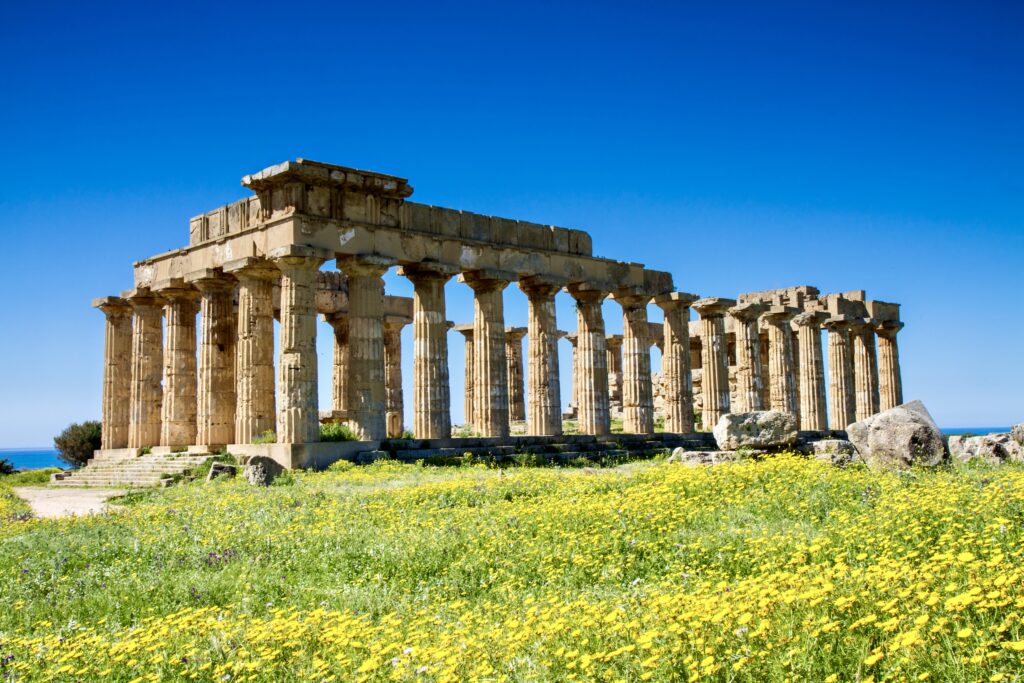
Selinunte
Just 45 minutes from Segesta is another of Sicily’s most impressive archaeological sites, Selinunte Archaeological Park.
The city was once a rich and powerful Greek colony covering 250 acres. Like the Valley of the Temples further east, it’s a collection of colossal ruins. One temple is reconstructed, some partially intact, and some a pile of toppled pillars and chunks of stone.
The ticket office is near the eastern temples. There, you’ll find the most majestic temple, the reconstructed Temple E from the 5th century B.C.
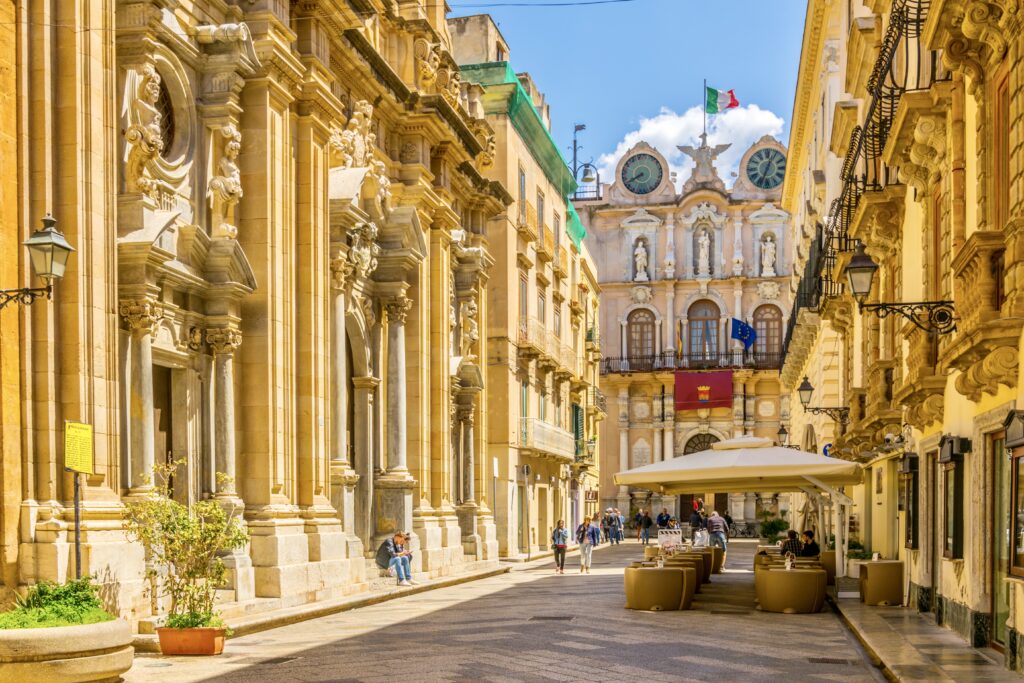
Trapani
Trapani makes a good base for visiting Segesta and other places in the area, like the salt pans and Erice. The ancient Elymians founded Trapani in the 11th century B.C.
Today, it’s a pretty art book of a town with honey colored Baroque architecture. It has a buzzing port with a beautiful waterfront and eateries serving up fresh Mediterranean dishes like fish couscous.
For more information, you can check out my 2 days in Trapani itinerary.
I hope you’ve enjoyed my guide the the ruins of Segesta Sicily. You may enjoy these other Sicily travel guides and resources:
- 2 days in Palermo itinerary
- 2 days in Syracuse itinerary
- 2 days in Trapani itinerary
- 1 day in Catania itinerary
- 1 day in Taormina itinerary
- Guide to the Valley of the Temples
- Guide to Villa Romana del Casale
- Guide to Monreale Cathedral
- Guide to the Norman Palace and Palatine Chapel
- Guide to Palermo Catheral
If you’d like to visit Segesta Sicily, pin it for later.
